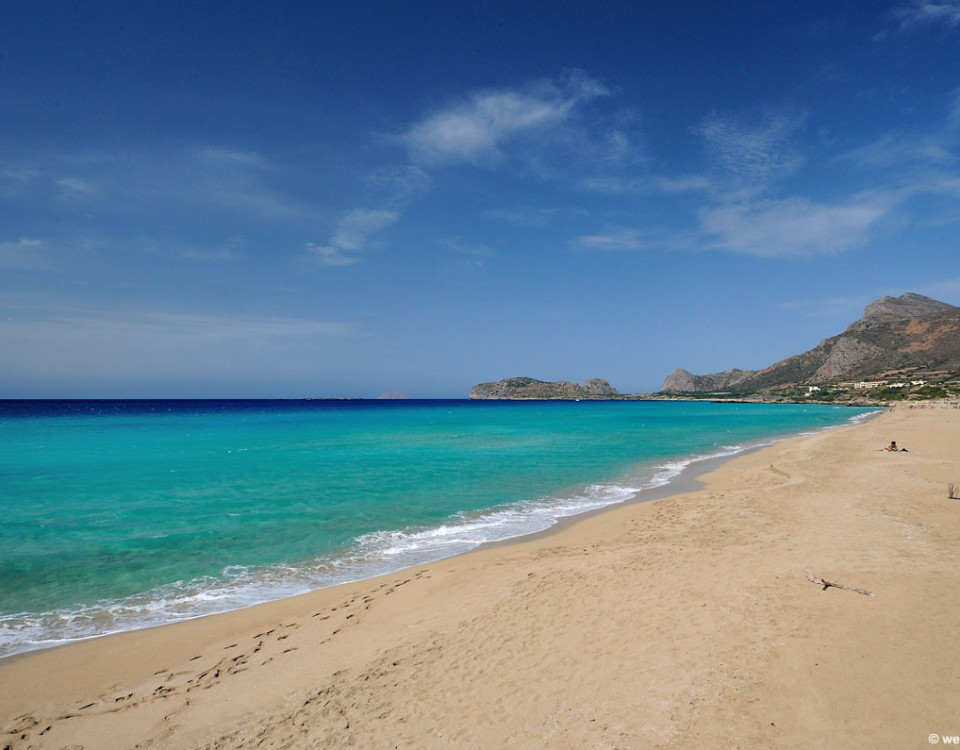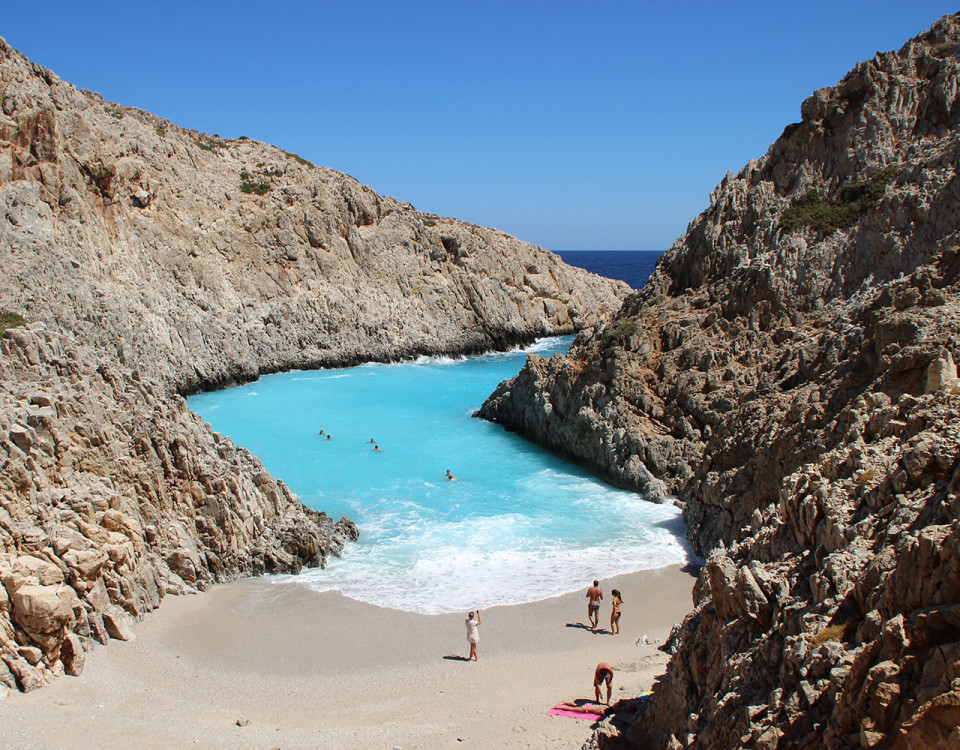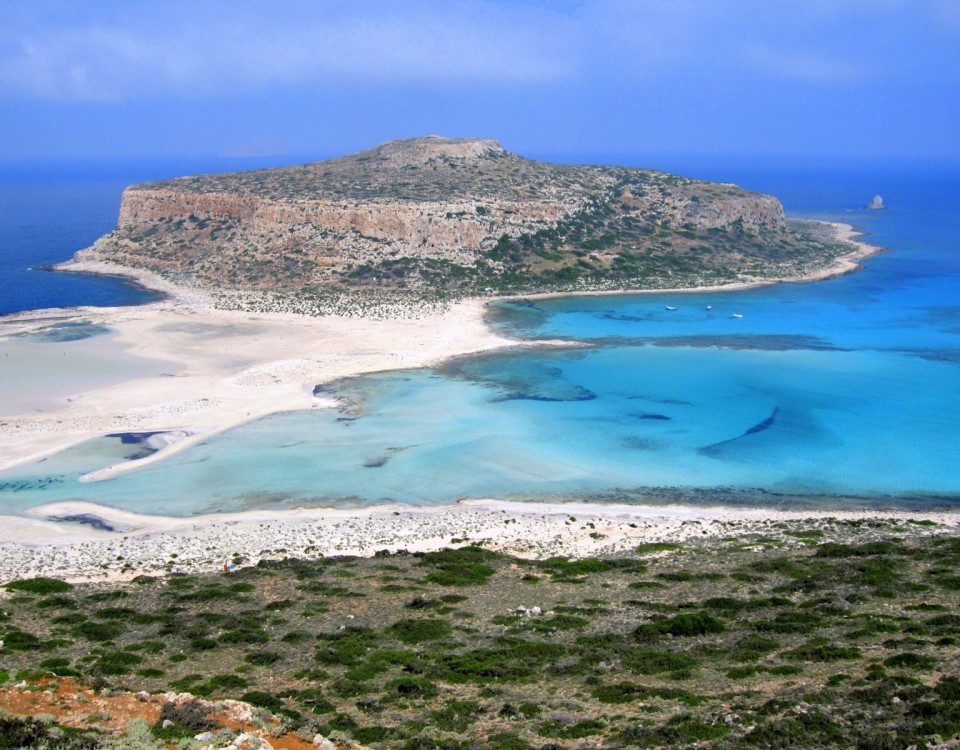- Taxi Transfers in Chania, Crete
- info@taxichaniacrete.gr
- +30 6943444744

Balos
March 21, 2016
Seitan Ports
March 21, 2016Paleochora is a coastal town and port in the prefecture of Chania in southwest Crete. It is part of the municipality Kantanos – Selino. It is built on a small peninsula and is by Chania 77 km from Chania.
Paleochora is built on a small peninsula between two bays of the Libyan Sea. The peninsula did not exist in antiquity and the hill where the Venetian castle is located was a small island, untill the sea floor was lifted because of a strong earthquake, forming a peninsula. On the east coast of the peninsula is a pier for mooring ships on. The west bay is an artificial harbor, while on the islet Schistonisi, the tip of the peninsula, exist a lighthouse.
On both sides of the peninsula are beaches, one with pebbles in the east called beach Gravel or Pebbles and one with sand in the west called Pahia Ammos and has a length of approximately one kilometer. Four (4) kilometers east of Paleochora Gialiskari ate located three more beaches, near the gorge where the village of Anhydrous. Start scattered in these beaches are big rocks called Talos, the mythical guardian of Crete. On the west are the beaches of Psilo Volakas, Plakaki and Karavopetra near Grammeno, a small peninsula. Four (4) kilometers east of Paleohora are several beaches ten (10) kilometers west of Krios beach and to the West, about 18 km, the beach of Elafonisi.
North of Paleohora are hills and mountains 300 meters high, which lead to the sea in a small plain called the Plain of Paleochora.
Paleohora has a very mild and warm Mediterranean climate, according to the data of the meteorological station of the National Observatory of Athens. In fact, for the nine-year period October 2006- December 2014 Paleochora notes average annual temperature of 20.7 ° C and is the warmest area in Greece according to the Observatory’s network. The absolute maximum temperature was recorded in June 2007 with 45.0 ° C and the absolute minimum in February 2008 to + 1.2 ° C. On June 27, 2007 the station of Paleochora noted the remarkably high minimum temperature of 35.8 ° C.
In antiquity north of Paleochora was the ancient city Kalamidi, from which few is known. It was probably the seaport of ancient Kantanos. The strategic position of the region prompted the Venetians and quarterback Marino Gkrantenigko to build a fort in 1282, which he named Castello Celery, reference to former name of the region, which perhaps refers to celery that grew in the area. The fort gave its name to the whole region, which is now known as Celery which means “Selino”. The fort was destroyed during a revolt against the Venetians in 1332 from Varda Kallergi and his men. The fort was rebuilt in 1334. In 1536, the fortress was destroyed by Barbarossa. The fort was reconstructed in 1595.
The fort was occupied by the Ottoman Turks in 1653, who made some modifications, and created a settlement inside, but after consecutive disasters due to conflicts they left the area. When English traveler Robert Paslei in 1834, visited the fort he found only ruins. Before 1866, in the area there were only temporary structures for accommodations of farmers and store supplies tools and stables. The area was inhabited again by oil traders, including Paleochora that was used again as a port for the export of olive oil of Kandanou province, as it was easier to be transported there than to Chania. It was referred to as settlement for the first time in the census of 1881. In 1897, during the Cretan Revolution of 1895 to 1898, the Turkish army slaughtered the Christians of Paleochora and then took refuge in the castle of Paleochora, where they departed with ships to the Great Powers. After the union of Crete with Greece, the harbor of Paleochora flourished thanks to the ferry connection with Piraeus. In 1941, during the German possession, the Germans arrested suspected resistance, imprisoned and executed 29 of them. After the possession, Paleohora began to develop as a tourist center, one of the most important along with Ierapetra on the south of Crete, because of climate, beaches and monuments of the area. Apart from tourism, important economic sectors are agriculture and fisheries.





















